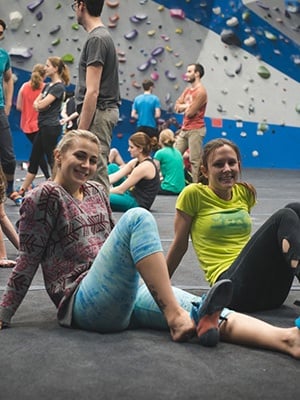The Sendy Times
Expand your climbing knowledge with training tips and tricks from Movement's instructors, trainers, and coaches.

Training for Climbing | Climbing Tips | Climbing Techniques | Climbing Technique
By: Dr. Kevin Cowell
Climbing is one of the most rewarding (and demanding) sports out there. Whether you’re chasing your next boulder project or logging endurance laps on the rope wall, your body is constantly adapting to stress. At The Climb Clinic, we work with climbers of all levels (from first-time gym members to seasoned 5.14 crushers) and we’ve noticed that most climbing-related injuries fall into just a few categories. Here are the five most common injuries we see and how to prevent them at Movement.

Training for Climbing | Climbing Tips | Climbing Technique
By: Erin Ergun
Have you ever hopped on the wall, only to get confused a few moves in? Climbing can often feel intuitive, but sometimes a tricky sequence can throw you off and burn precious forearm power. That’s where route reading comes in. By taking some time to plan before you pull on, you can climb smarter, save energy, and give yourself a better shot at sending. In climbing competitions, you’ve probably seen athletes miming moves from the ground or even rehearsing an entire route in their heads. Route reading helps you (and the pros!) separate the mental processing from the physical effort. By studying a climb before you get off the mat, You’ll create muscle memory for key techniques, anticipate the crux (the hardest part of the climb), and feel more confident when it’s time to commit. Ready to give route reading a try? Here are a few tips to conserve forearm power, maximize each attempt, and give yourself a better chance at flowing through your beta.

Get the latest climbing news, tips and tricks straight to your inbox.

Training for Climbing | Climbing Tips
By: Movement Staff
Looking to level up your movement on the wall? Climbing isn’t just about strength—it’s about using technique to climb smarter, not harder. In our Part 1: Climbing Techniques and How to Use Them blog, we shared 5 fundamental skills every climber should know. Now, we’re diving deeper with 7 more essential techniques: Drop Knees, Toe Hooks, Stemming & Pressing, Laybacks, Knee Bars, Rock Overs, and Dynamic Movement. Learn what they are, when to use them, and how to practice each one to become a more efficient climber.

Lead Climbing | Training for Climbing | Climbing Tips
By: Erin Ergun
So you’ve been climbing for a little while now—you’ve got your harness figured out, you know what a crimp is, and you’ve maybe even surprised yourself and sent that project you’ve been working on. The days of fumbling through a figure-eight are behind you (shoutout to that Intro to Ropes class!), and you’re starting to feel more at home on the wall. You’ve found your rhythm, taken the intro classes, and now you’re wondering: what’s next?

Training for Climbing | Climbing Tips | Fitness and Yoga
By: Kat Ku
You’ve probably seen a bunch of run clubs popping up, and you probably have some climber friends who can’t go a single day without hitting the pavement. Then again, you might know someone who refuses to do any form of cardio that isn’t just the approach to a route or boulder. So, how much does cardio actually help us in climbing?

Training for Climbing | Climbing Tips
By: Paris Jackson
Thinking about trying climbing but low-key intimidated? Climbing tends to have this hardcore, extreme sport vibe—like it’s only for super-fit, daredevil types. But honestly? That couldn’t be further from the truth. People walk into our gyms every day from all kinds of backgrounds, fitness levels, and experience, —some with zero clue what they’re doing (and that’s totally okay). So, let’s bust through 5 common myths that might be holding you back!

World Indoor Climbing Competition | Rock Climbing | Training for Climbing | Climbing Tips | bouldering | Comp Climbing
By: Movement Staff

Training for Climbing | Fitness and Yoga
By: Paris Jackson
Let’s face it, climbing can be tough on your body. You’re pulling, pushing, hanging, and twisting in ways that most workouts don’t even come close to. And while climbing is a killer workout on its own, adding cross training can make a world of difference in how strong, stable, and injury-free you feel on the wall.

Training for Climbing | Climbing Tips
By: Kat Ku
Whether you're a boulderer or a rope climber, you've probably felt the dreaded pump—the moment when your forearms are on fire, your grip starts failing, and your hands just want to peel open. Even worse, the moves feel totally doable, but stringing them together from the ground up? That’s a different story. You find yourself thinking, "If only I had better endurance..."